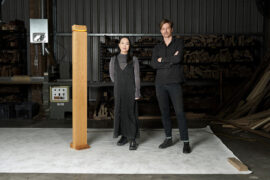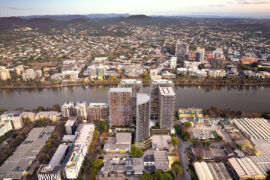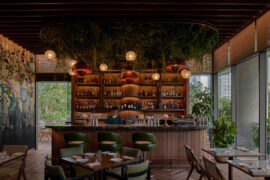Cubes 89 (Dec/Jan) picks up a number of ‘construction productivity’ threads and seeks examples of projects where a concern for efficiency is paired with an equal concern for the human experience.

On the cover is the extension of Nanyang Girls' High School designed by Park + Associates. Photo by Edward Hendricks (courtesy of Park + Associates)
December 4th, 2017
Efficiency, optimisation, productivity – these are words we seem to hear increasingly often in the workplace arena, in the construction industry, and even in our social media feeds. There are articles aplenty about ‘productivity hacks’ circulating online, all promoting ways to get more out of life – both at work and at home.
We’re all being held more personally accountable for squeezing the most and the best out of every minute of life, while our employers and workplace designers grapple with how to maximise our output in an environment that needs to balance the possibility of rewarding social collisions with the need for quiet, concentrated work.
And increasingly, the word ‘productivity’ is being heard at greater frequency in the context of construction. In October, Singapore’s Building and Construction Authority (BCA) organised the Singapore Construction Productivity Week 2017, and key points of discussion this year were Design for Manufacturing and Assembly (DfMA), Integrated Digital Delivery (IDD), and the BCA’s ‘Construction Industry Transformation Map’.
It heralds the advent of smart buildings, new (faster and better) construction technologies, digitised work processes, and enhanced green-building expertise.
We pick up a number of ‘construction productivity’ threads in this issue of Cubes – from prefab and modular components, to high-performance timber, to BIM and the deep digital networks being forged by firms such as DP Architects.
We look at how buildings (such as the HDB project Kampung Admiralty by WOHA and Ramboll Studio Dreiseitl) can be productive in ways beyond construction and planning efficiencies. And we seek examples of projects where a concern for efficiency is paired with an equal concern for the human experience.
Cubes 89 is on sale now!
INDESIGN is on instagram
Follow @indesignlive
A searchable and comprehensive guide for specifying leading products and their suppliers
Keep up to date with the latest and greatest from our industry BFF's!
The new range features slabs with warm, earthy palettes that lend a sense of organic luxury to every space.

London-based design duo Raw Edges have joined forces with Established & Sons and Tongue & Groove to introduce Wall to Wall – a hand-stained, “living collection” that transforms parquet flooring into a canvas of colour, pattern, and possibility.
The internet never sleeps! Here's the stuff you might have missed

AHEC’s KEEP exhibition at Cult Sydney sees six Australian architects craft lasting furniture pieces, on view until 4th October.

Plus Studio and ICD Property have submitted a proposal for a development on Brisbane’s Donkin Street, using a 1.68-hectare former industrial site as a new riverside residential and community destination.

Grounded by the rich warmth of American white oak, The Standard’s newly opened restaurant, Kaya, redefines the classic dining convention through a tasteful fusion of biophilic design, mid-century modern sensibility and elevated whimsy.